Jim Jones Jr. Speaks Out
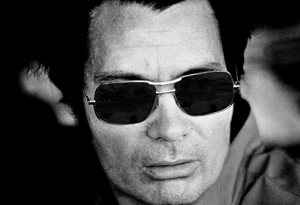
Photo: AP
The term "don't drink the Kool-Aid" has become part of common vernacular, but it has its roots in a very real crime. In the 1978 Jonestown massacre, more than 900 Americans drank a poisonous cocktail—not actual Kool-Aid—laced with deadly cyanide. It was the biggest mass murder-suicide in modern history and was masterminded by Jim Jones, the leader of the Peoples Temple.
When the Peoples Temple was first created in 1956 in Indiana, Jones said it stood for: "Divine principles. Total equality. A society where people own all things in common, where there is no rich or poor, where there are no races."
Nine years later, Jones moved his wife and seven children—which they called their "rainbow family" because they included an African-American, Korean-Americans and a Caucasian biological son—to California. The Peoples Temple also moved and grew into an organization of thousands.
Jones convinced members to sell their homes and sign over their paychecks and life savings to the movement. He claimed he could miraculously heal the sick. But he was also coming under government and media scrutiny for rumors of sexual and physical abuse, so in 1977, Jones moved the Peoples Temple to Guyana, where his team had built their own utopia: Jonestown.
When the Peoples Temple was first created in 1956 in Indiana, Jones said it stood for: "Divine principles. Total equality. A society where people own all things in common, where there is no rich or poor, where there are no races."
Nine years later, Jones moved his wife and seven children—which they called their "rainbow family" because they included an African-American, Korean-Americans and a Caucasian biological son—to California. The Peoples Temple also moved and grew into an organization of thousands.
Jones convinced members to sell their homes and sign over their paychecks and life savings to the movement. He claimed he could miraculously heal the sick. But he was also coming under government and media scrutiny for rumors of sexual and physical abuse, so in 1977, Jones moved the Peoples Temple to Guyana, where his team had built their own utopia: Jonestown.
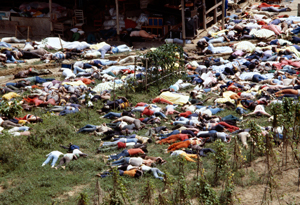
Photo: Getty
Nearly 1,000 people followed Jones to Jonestown, supposedly a well-planned community with a clinic, school and communal kitchen. Over time, however, Jones' behavior became alarming. It was rumored he was abusing drugs, and he would give speeches over a loud speaker that were said to be increasingly frantic.
In the United States, former church members were complaining that Jones was holding their loved ones against their will, so U.S. Rep. Leo Ryan of California traveled to Jonestown to investigate the allegations. Slowly, members came forward to tell U.S. Rep. Ryan that they wanted to leave.
Jim Jones appeared calm, but behind the scenes he had ordered what he called the avenging angels to take action. They ambushed U.S. Rep. Ryan at the airstrip, and he and four others were killed.
Back at Jonestown, Jones called an emergency meeting and told his followers to drink a poisonous liquid from a large metal vat—babies and children first, then adults. More than 900 people, including nearly 300 children, died.
In the United States, former church members were complaining that Jones was holding their loved ones against their will, so U.S. Rep. Leo Ryan of California traveled to Jonestown to investigate the allegations. Slowly, members came forward to tell U.S. Rep. Ryan that they wanted to leave.
Jim Jones appeared calm, but behind the scenes he had ordered what he called the avenging angels to take action. They ambushed U.S. Rep. Ryan at the airstrip, and he and four others were killed.
Back at Jonestown, Jones called an emergency meeting and told his followers to drink a poisonous liquid from a large metal vat—babies and children first, then adults. More than 900 people, including nearly 300 children, died.
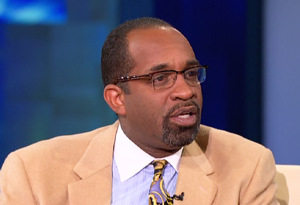
Jim Jones Jr., Jones' son, then 18, wasn't in Jonestown on the day of the mass murder-suicide. He was 150 miles away in Georgetown, Guyana, playing in a basketball tournament. "My father radioed to me that they were 'visiting Ms. Frazier,' which was code for committing suicide," he says. "I argued with him. I said: 'Isn't there another way? Can't we do something else?' My father told us to find knives, piano wire, poison if we were able to find it, and commit suicide."
Jim says he couldn't believe what he was told. "I was concerned about my loved ones, my family, my wife," he says. Jim's parents, brother, sister, wife and unborn baby died that day.
After getting the radio call from his father, Jim says he and other members of the basketball team went to the U.S. Embassy to find out what was going on. "We thought we could stop it," he says.
Jim says there had been practice drills of suicide leading up to that day. "It was a test of loyalty, you know? People would line up and pledge their life to the cause," he says. "The cause was non-isms. Non-racism, non-sexism, non-ageism."
Jim says he couldn't believe what he was told. "I was concerned about my loved ones, my family, my wife," he says. Jim's parents, brother, sister, wife and unborn baby died that day.
After getting the radio call from his father, Jim says he and other members of the basketball team went to the U.S. Embassy to find out what was going on. "We thought we could stop it," he says.
Jim says there had been practice drills of suicide leading up to that day. "It was a test of loyalty, you know? People would line up and pledge their life to the cause," he says. "The cause was non-isms. Non-racism, non-sexism, non-ageism."
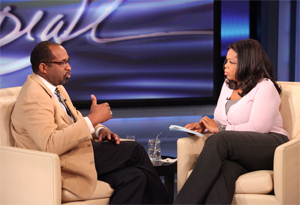
When Jim was adopted by Jones, he was the first African-American child adopted by a Caucasian family in the state of Indiana, but says he didn't know it because there was no race in his family. "I had Koreans in the family. I just thought I had a better tan."
Jim says that when he went with his father to Jonestown at age 17, he believed they were going to create a new world. "The common theme was people wanted to make a difference," he says. "We had an organizational structure, an agricultural team, the education projects, the infirmary or hospital team. It was a whole community."
Toward the end, when other members of the Peoples Temple said Jones was getting sicker, Jim says he didn't see it. "I didn't want to see it," he says. "I always thought the ends justify the means. What I didn't understand is that if the means become the foggiest, that changes the ends."
Jim says he did notice some changes in his father, but he believed they were due to the pressure people put on him. "I saw the preaching all night long, the tirades of discipline against other people," he says. "People were punished severely. I saw that and I thought, you know, did it sit right with me? No. But did I step up against it? No, I didn't."
Jim says that when he went with his father to Jonestown at age 17, he believed they were going to create a new world. "The common theme was people wanted to make a difference," he says. "We had an organizational structure, an agricultural team, the education projects, the infirmary or hospital team. It was a whole community."
Toward the end, when other members of the Peoples Temple said Jones was getting sicker, Jim says he didn't see it. "I didn't want to see it," he says. "I always thought the ends justify the means. What I didn't understand is that if the means become the foggiest, that changes the ends."
Jim says he did notice some changes in his father, but he believed they were due to the pressure people put on him. "I saw the preaching all night long, the tirades of discipline against other people," he says. "People were punished severely. I saw that and I thought, you know, did it sit right with me? No. But did I step up against it? No, I didn't."
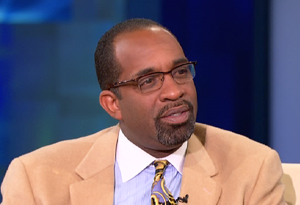
Jim says that on the day of the massacre, people were manipulated into believing they needed to lay down their lives in protection. "They had been told that people were going to come in and take their children away. They were going to separate us, and they were going to invade our community," he says. "What [my father] does, very manipulative, he has the children ingest the cyanide first. And, I mean, I have three boys, and I've got to tell you, if I saw my kids dying, why would I want to live?"
Jim says he didn't return to the camp in the days after he received the call from his father. "My brother Tim did," he says. "At the time, I was very upset that I wasn't selected to go back to help identify bodies or try to make sense out of it. Thirty-some years later, I feel God protected me because I don't have that imprint in the back of my mind."
Jim says he didn't return to the camp in the days after he received the call from his father. "My brother Tim did," he says. "At the time, I was very upset that I wasn't selected to go back to help identify bodies or try to make sense out of it. Thirty-some years later, I feel God protected me because I don't have that imprint in the back of my mind."
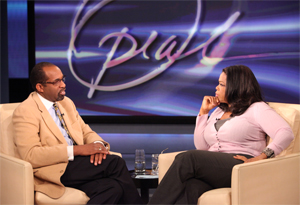
Upon returning to the states, Jim says he went by the common name James Jones for 15 years. It wasn't until they used the name Jim at work that he took the name back. "I realized that's who I am. I'm Jim Jones Jr. I'm the African-American son that was adopted in Indiana by a Caucasian family. I'm part of an organization that tried to build a new world," he says. "Nine hundred people died, and I miss them every day. But I also recognize that they tried. They tried something—they failed horrifically—but they tried, and out of that, I've taken a lot of pride to realized that I'm Jim Jones Jr. I can't hide from that."
Despite Jones' wrongdoings, Jim says he has forgiven his father. "The mental illness was exacerbated by the drug abuse and the absolute power where no one challenged him. When you put that cocktail together, the mind can spiral out of control, and that's what Jim Jones did. He spiraled out of control and self-destructed."
Despite Jones' wrongdoings, Jim says he has forgiven his father. "The mental illness was exacerbated by the drug abuse and the absolute power where no one challenged him. When you put that cocktail together, the mind can spiral out of control, and that's what Jim Jones did. He spiraled out of control and self-destructed."
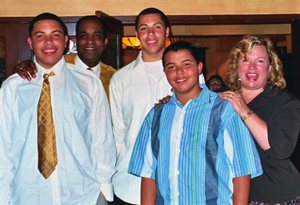
Around the time of the 20th anniversary of the Jonestown massacre, Jim returned with his three sons. "I wanted them to walk the ground of Jonestown to understand what it is to stand in Jonestown. I knew they would have their own impression and would hear their own stories of Jonestown, but I wanted to give them a foundation of what kind of world was trying to be created there," he says.
The one remnant of Jonestown that Jim found when he was back there was the vat that held the poisonous drink that killed so many. He says he has often wondered if he would have ingested the drink if he'd been there that day. "When I look at my wife, my mother, my family who ingested [it], I cannot say I wouldn't have," he says. "Out of respect for what they did."
Jim says he shared his past with his children by telling them the good stories about their grandfather. "Stories of playing ball together, or different trips we went on," he says. "So they have a foundation of just hearing about grandpa Jim. "
The one remnant of Jonestown that Jim found when he was back there was the vat that held the poisonous drink that killed so many. He says he has often wondered if he would have ingested the drink if he'd been there that day. "When I look at my wife, my mother, my family who ingested [it], I cannot say I wouldn't have," he says. "Out of respect for what they did."
Jim says he shared his past with his children by telling them the good stories about their grandfather. "Stories of playing ball together, or different trips we went on," he says. "So they have a foundation of just hearing about grandpa Jim. "



